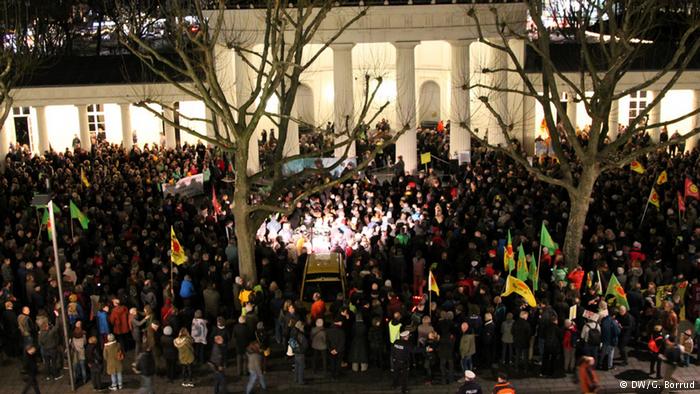German protesters fear restarting aging Belgian reactors will summon Fukushima-like disaster
01/12/2016 / By Chris Draper

Belgian power utility Electrabel restarted an aging nuclear reactor December 23rd following a near two-year shutdown, angering many German protesters who fear the occurrence of another Fukushima-like disaster.
In 2011, an earthquake launched a tsunami that engulfed three nuclear reactors at the Fukushima Daiichi power plant in Japan. Since then, cleanup efforts have been slow and tedious, prompting many people to wonder whether the risks attached to nuclear energy outweigh the benefits.
Electrabel claims the Tihange 2 reactor put back online is completely safe, despite mass opposition from Germany’s most populous state, North Rhine-Westphalia.(1)
Around 2,000 people crowded in Aachen’s old town two days before Christmas to protest the rekindling of the power plant. One of the reactors was shut down almost three years ago after cracks were discovered, and another was shut down due to a fire in December.(2)
Several Belgian nuclear facilities shut down in recent years
That’s just the tip of the iceberg. Belgium has been subject to a number of other nuclear mishaps in recent years. At one point, three of the country’s seven reactors were temporarily put offline.
The Belgian nuclear authority gave officials permission to restart Tihange 2. In addition, the organization gave the go-signal to restart another reactor close to Antwerp in November, allowing Electrabel to operate the power plant until its legislated final closure date in 2023.(1)
“We fully understand that our decision is criticized, especially in the context of the nuclear phase-out in Germany,” Sebastien Berg, of Belgium’s Federal Agency of Nuclear Control (FANC), told sources. “But our decision has nothing to do with a position about the future of nuclear energy in Belgium,” stressing to DW that both reactors at Tihange were found by FANC to be “completely safe” based on “extensive technical and scientific studies.”(2)
Authoritative assurance do not ease protester concerns
Despite these assurances, Simone Mohr, who specializes in nuclear facility safety at the Oeko-Institut, told sources that these concerns are more than justified.
“From my point of view, it simply isn’t correct to assert that Tihange 2 is 100 percent safe, because to make this assertion you would have to examine within the walls where the cracks were observed,” he said. “And to do that, you would have to destroy the reactor vessel. This is not an option.”(2)
Others, such as Garrelt Duin, North Rhine-Westphalia’s economy minister, have spoken strongly against the relaunch of the Tihange, saying it is outright irresponsible. She states reactors with comparable deficiencies as the ones at Tihange would not be allowed to run in Germany. These components, she told sources, would have been rejected after manufacturing.
“The material problems observed in Belgium were found in the pressure vessels, the heart of the nuclear reactor where the nuclear fuel is located. With regard to safety, this is by far the most important part of the reactor,” she said.(2)
“Ultrasound inspections are able to detect and localize flaws but they are not able to characterize them sufficiently. If a German plant showed results like those found at these Belgian reactors, I would be very surprised if it were deemed operational,” she added.(2)
Four of Germany’s ten largest cities — Cologne, Düsseldorf, Dortmund and Essen — are based in North Rhine-Westphalia. The city of Aachen, located approximately 40 miles from Tihange, said it had faced legal hurdles in trying to thwart the reactor from restarting.
Contrary to Belgium’s current position, Germany decided to phase out a significant nuclear energy program in wake of the 2011 Fukushima disaster. During that time, Belgium suggested it would wean itself off nuclear power; however, it reverted back to it due to a lack of dependable alternatives.
Sources include:
(1) JapanTimes.co.jp
(2) DW.com
Submit a correction >>
Tagged Under:
aging nuclear reactors, Belgium, Electrabel, Fukushima, Fukushimaround2, FukushimaWatch
This article may contain statements that reflect the opinion of the author
RECENT NEWS & ARTICLES
COPYRIGHT © 2017 FUKUSHIMAWATCH.COM
All content posted on this site is protected under Free Speech. FukushimaWatch.com is not responsible for content written by contributing authors. The information on this site is provided for educational and entertainment purposes only. It is not intended as a substitute for professional advice of any kind. FukushimaWatch.com assumes no responsibility for the use or misuse of this material. All trademarks, registered trademarks and service marks mentioned on this site are the property of their respective owners.




















